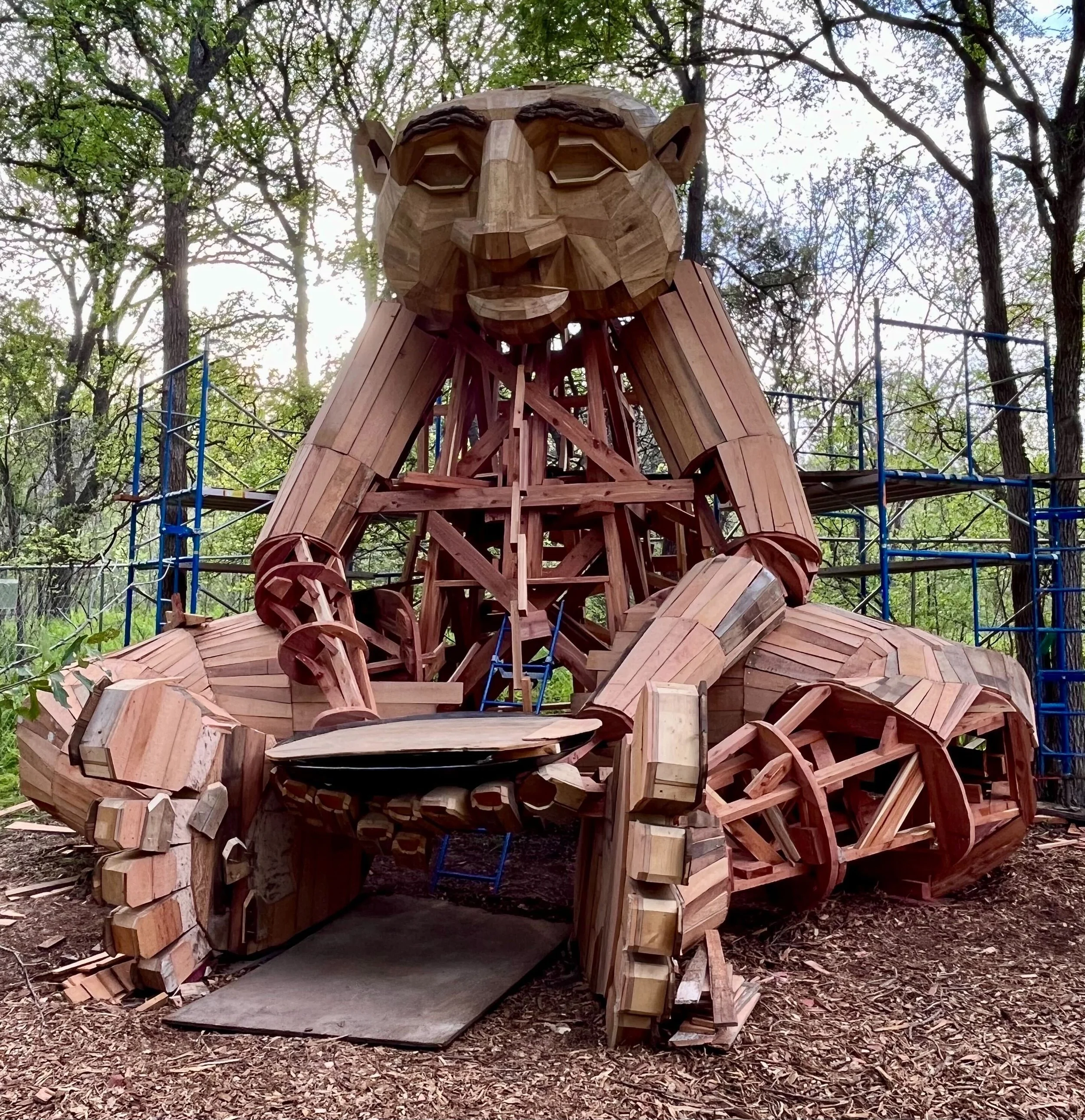Curious about the materials used to build the Pease Park troll?
More than 80% of our new Austin troll is made from recycled, repurposed, or found materials. Here are some specifics.
For safety and longevity, untreated dimensional lumber is used for the core internal structure. For the Pease Park troll, approximately 1,800 linear feet of Eastern Red Cedar have been used for this core. This cedar is from the local, family-owned Wampler sawmill in Bastrop County which the Wampler family has operated for 61 years.
The exterior cladding of the troll is repurposed wood from the research test tank that was used at ARL:UT at the J.J. Pickle Research Campus of UT Austin. A local sawmill with the mission of giving new life to Austin’s fallen trees, Harvest Lumber Co. recovered the material from UT and custom-milled it to be used for Malin’s Fountain.
Originally furnished to the laboratory by the Naval Sea Systems Command, the research test tank supported a variety of purposes throughout its lifetime, from acoustic testing to the evaluation of large subsea research equipment. ARL:UT’s large Douglas fir test tank was constructed on-site from 1976 – 1979, and replaced in 2022 when it reached the end of its service life. In 2021, the tank was deconstructed and the wood was donated to a local recycling center to make way for a new wooden tank that will hopefully be in use for the next 50 years.
The exterior cladding of the troll consists of approximately 7,500 linear feet of this wood.
The troll’s feet were created in Denmark from repurposed materials. The hair for the troll is from Ashe juniper roots collected by a local supporter and Ashe juniper from ice-storm felled trees on the Kingsbury Hillside.
The troll has a necklace made from found and donated materials. The seating around the troll is from “Baby,” a beloved pecan tree from the Govalle area that was donated after the tree died.







